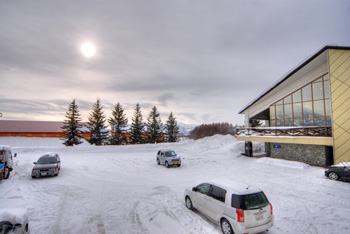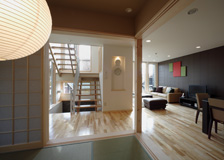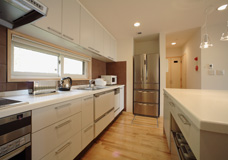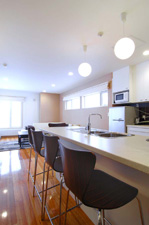
Japanese concrete buildings constructed in the 1980s and apartment blocks built on ski resorts – two of the least likely settings, you might think, for eco-friendly construction. Yet these are the key ingredients in what will be one of Hokkaido’s first environmentally sustainable building developments: the Niseko Powerhouse.
Located in the Higashiyama area of Niseko, the Niseko Powerhouse consists of a refurbished concrete hotel, originally built for the Hokkaido electricity authority staff, and 36 newly constructed boutique apartments. It will be fitted with some of the most advanced energy-saving technologies in Japan.
“Niseko Powerhouse will be an intelligent design that uses new, and some very old, technologies to draw as little energy from the power grid as possible,” says Simon Jackson, Director at Ridge Runner Architectural Design & Development, the Japanese company responsible for the project.

The development is being marketed as environmentally sustainable winter ski and summer sports holiday homes. The developers are looking at ways to include solar power, heat exchange systems, road heating that uses geothermal hot spring energy. Solar panels and passive solar design, where buildings are constructed to make the best use of the sun for heating and cooling, will be an integral part of the Niseko Powerhouse.
“There is a scramble to build new homes for the overseas visitors discovering Niseko, which we think is an opportunity to make a break from traditional energy- hungry building methods and shift toward the sustainable technologies we will use to build the Niseko Powerhouse,” says Ridge Runner President Tadashi Sasaki.

Despite having abundant geothermal energy, Japan makes little use of its natural hot water except for bathing. The Niseko Powerhouse will use boiling hot onsen water not only to fill the baths in each of the 36 boutique apartments but also to heat the complex during Hokkaido’s sub-zero winters.
The developers are also considering turning to some Japanese technology from the Heinen Period (800 A.D.) to provide natural air conditioning. Storing winter snow in building basements, such as in traditional Japanese himuro (ice houses), will provide natural cool airflows against the 30ºC summer heat.
The Niseko Powerhouse will be showcased to the world during the G8 Summit in nearby Lake Toya in July this year and completed by the end of 2008.
The Niseko Powerhouse
Higashiyama, Niseko, Hokkaido
www.nisekopowerhouse.com
For more information on resort properties in Japan, visit Japan Property Listings.







